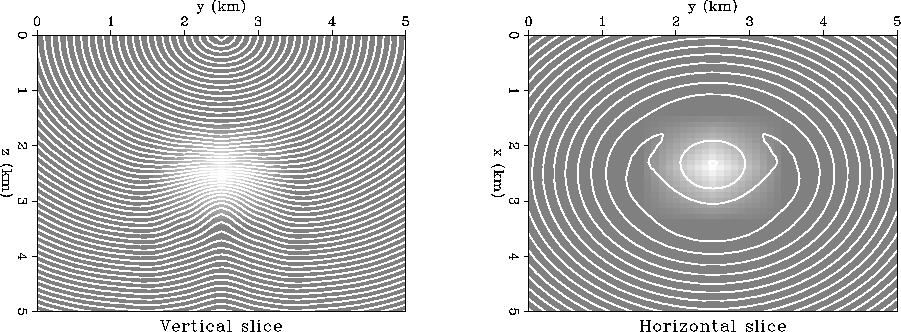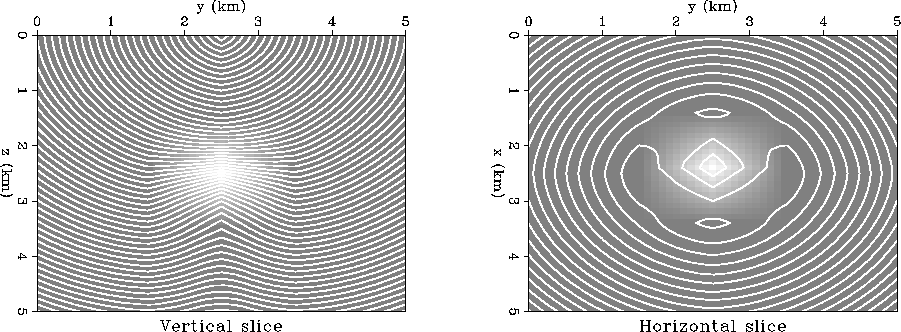




Next: Discussion
Up: Fomel: Linearized Eikonal
Previous: ALGORITHM
For the first numerical test, I used a model with a smooth anomaly
inside a constant slowness background. The initial traveltime was
computed analytically, using the background slowness. The result of
the computation is shown in Figure 1. The computation
involved 3 re-linearization cycles with 10 linear inversion iterations
in each cycle.
linear-0.01
Figure 1 The traveltime
contours for a smooth anomaly, computed by the linearized eikonal
solver. The background slowness is 1 s/km. The maximum anomaly
slowness is 2.3 s/km. The wave source is in the middle of the top
plane of the model. The left plot shows a vertical slice. The right
plot shows a horizontal slice, taken at 2.5 km depth.




 mihai-0.01
mihai-0.01
Figure 2 The traveltime
contours for a smooth anomaly, computed by the exact eikonal solver.
The input and plotting parameters are the same as in the preceeding
figure.

The result shows the expected behavior of the wavefronts. It agrees
with the result of a direct eikonal computation, shown in Figure
2. The direct computation was done with Mihai
Popovici's TTGES eikonal solver, which has outstanding efficiency and
stability properties. Obviously, more tests are required to evaluate
the comparative performance of the algorithm and the limits of its
practical applicability. The discussion section contains some
speculations about the perspective usage of the linearized algorithm.





Next: Discussion
Up: Fomel: Linearized Eikonal
Previous: ALGORITHM
Stanford Exploration Project
11/11/1997

